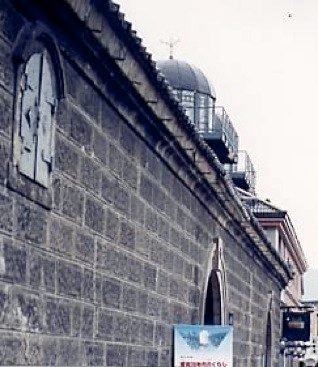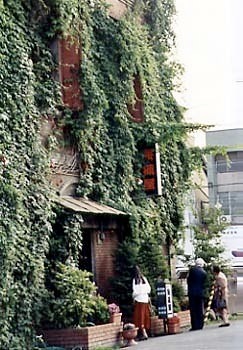

































As Otaru's popularity has increased, so has the number of "retro" restaurants, funky boutiques, tasteful pubs and other fashionable establishments in the city... many of which use the city's classic architecture in new and interesting ways. As I recall, this ivy-covered doorway actually concealed a very classy bar with spare wooden counter and elegant if aging decor - the perfect place to relax and enjoy a trendy if "pleasantly decrepit" city.
Here's an example of Otaru's classic buildings. (Meiji? Taisho? early Showa? Dunno - I'm a cyclist, not an architect.) In places like Kobe and Tokyo, most of these old buildings had been torn down by the time that the modernization-crazy Japanese of the period realized that there might be some sense in preserving them. Thankfully, Otaru was a backwater for so long that, proportionally at least, many more of them have survived. Sorry this photo is truncated; it was the last picture on the roll and this is all my camera decided I should see.